The Rich Are Always With Us (1932)
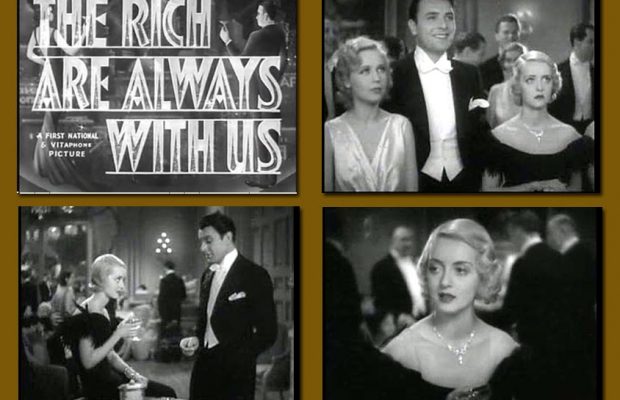
Toronto Film Society presented The Rich Are Always With Us (1932) on Monday, November 28, 1983 in a double bill with Mr. Deeds Goes to Town as part of the Season 36 Monday Evening Film Buffs Series “B”, Programme 3.
Production Company: A First National Picture, released by Warner Brothers. Producer: Samuel Bischoff. Director: Alfred E. Green. Screenplay: Austin Parker, based on the novel by E. Pettit. Photography: Ernest Haller. Musical Score: W. Franke Harling. Gowns: Orry-Kelly. Editor: George Marks.
Cast: Ruth Chatterton (Caroline Grannard), George Brent (Julian Tierney), Adrienne Dore (Allison Adair), Bette Davis (Malbro), John Miljan (Gregory Grannard), John Wray (Davis), Robert Warwick (The Doctor), Virginia Hammond (Flo), Walter Walker (Dante), Eula Guy (Mrs. Drake), Berton Churchill (The Judge), Edith Allen, Ethel Kenyon, Ruth Lee.
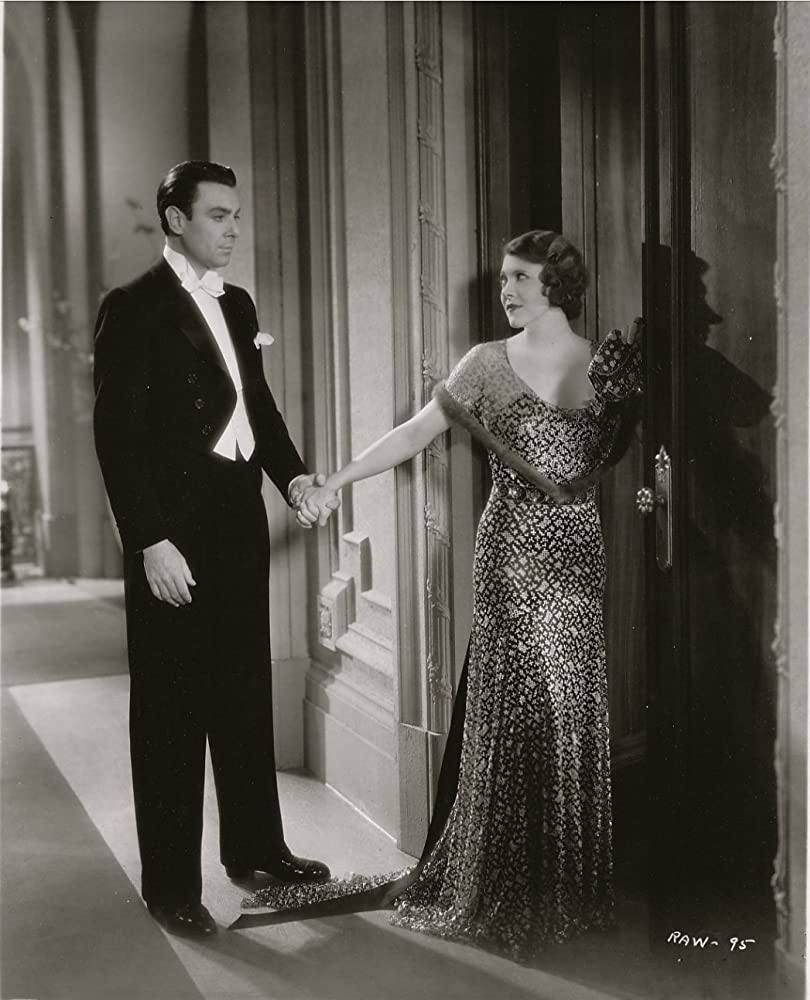
Tonight’s programme enables us to examine the Great Depression of the 1930s through the films of the era concerned. The first film, The Rich Are Always With Us, released in the nadir of the Depression in the middle of May, 1932, scarcely touched upon the temper of the times–it was an attempt at high comedy involving marriage and misunderstanding among the rich rather than the downtrodden–and it resulted in perhaps the most famous and beloved film of all the 1930s.
Ruth Chatterton’s Hollywood period was but a brief interlude in a long career. Born on Christmas Eve, 1893, she began acting as a teenager and made it to Broadway in 1911. From 1913 to the late 1920s she was a major Broadway actress, before embarking on her screen debut in 1928 with Sins of the Father, starring Emil Jannings. Chatterton was 35 when she made that first film, just about the oldest leading lady in the movies (1893 was also the year Mary Pickford was born–and Pickford began her film career in 1909; Blanche Sweet, who started filming in 1909 as Pickford, was born in 1895; while the indomitable Lillian Gish, born in 1896, commenced her films in 1912). Chatterton’s many years of experience on Broadway gave her a head start on her contemporary rivals in early sound films, and she quickly took advantage with Oscar nominated performance for Madame X (1929) and Sarah and Son (1930) while building a glorious reputation: James Agate once said “as an actress La Chatterton seems to me to knock La Garbo silly”; and in 1931 Chatterton was often voted by Fan magazines as the ‘First Lady of the Screen’ and ‘Finest Actress on the Screen’!
Of Chatterton’s contemporaries, Irene Dunne (born 1898) was the oldest, while Norma Shearer (1900), Ann Harding and Marlene Dietrich (both 1901), Kay Francis (1903), Claudette Colbert and Greta Garbo (both 1905), Janet Gaynor (1906), Katharine Hepburn and Barbara Stanwyck (both 1907), Bette Davis and Carole Lombard (both 1908) were all much younger than Chatterton, some up to ten and fifteen years. These actresses, who dominated the screen in the 1930s, 1940s and later, were nearly all burdened with heavy melodramas and woman’s pictures in the very early 1930s–and Chatterton suffered more than most with titles like: Sins of the Father, The Doctor’s Secret, Madame X, Charming Sinners, The Lady of Scandal, Anybody’s Woman, The Right to Love, Unfaithful, The Magnificent Lie, Once a Lady, Female, Lady of Secrets, etc. Almost all of Chatterton’s films were similar in subject and style, so it was really no surprise that the public would soon tire of her and her contemporaries would soon catch up to and surpass her. But for a few years, from 1929 to tonight’s film in 1932, and with a brief respite in Dodsworth in 1936, Chatterton had no peer. As David Shipman wrote in “The Great Movie Stars”: Among the actresses consistently given material unworthy of them, Ruth Chatterton holds a high place. Her films were True Magazine stuff, and she suffered nobly in them, caught–indeed trapped–in the wicked ways of the world. She was put-upon but resigned, sensitive but mature (physically–being in her mid-30s when she started in films, no one tried to keep her young) and usually upper-bracket: she was the sort of woman with whom all women could identify, if not necessarily sympathize. Men liked her because she was a woman of experience, because she had a ‘class’ rare at that time, and for an intriguing blend of serenity and humour in her eyes. There were no mannerisms or histrionics: she was completely believable and made almost compelling the most dishonest dialogue. She dominated the screen and was in advance of her time,…”.
And Bette Davis, in “The Lonely Life”, writes: “We [George Brent & Davis] were both cast in Ruth Chatterton’s first picture for Warner Brothers. As a matter of fact, I worked on the Chatterton film in the daytime and the Stanwyck film [So Big] at night for a week. I never knew who I was!
“Miss Chatterton had always been one of my favorite actresses. In Madame X and Sarah and Son she was magnificent. Her films were saved from bathos by her magic. In order to win her, Warners had promised her not only eight thousand a week but her choice of stories. It was probably the first fabulous contract for an actress since the innovation of talking pictures. She was a star from the top of her head to the tips of her toes. Miss Chatterton chose for her first film at Warners The Rich Are Always With Us, a drawing-room comedy in the best Frederick Lonsdale tradition. We were all terribly rich and Miss Chatterton, being the star, was the richest of us all, indeed the richest girl in New York. Although John Miljan was Miss Chatterton’s husband, he was playing around with Adrienne Dore; Miss Chatterton was in love with George Brent. I was ‘the pest of Park Avenue’ in love with Mr. Brent both on the screen and off–in both cases unsuccessfully. I had to hit Adrienne in the mouth like a sweet little debutante and then dig my heel in her back; but I didn’t get George and neither did Miss Chatterton, for that matter, on the screen–but she did off. They were married shortly after the completion of the film. The film bubbled with wit and sophistication, and I was thrilled to be appearing with Miss Chatterton.
“The first morning when I arrived on the set, I was clammy with nerves. Miss Chatterton swept on like Juno. I had never seen a real star-type entrance in my life. I was properly dazzled. Her arrival could have won an Academy nomination. Such authority! Such glamour! She was absolutely luminous and radiated clouds of Patou and Wriggley’s Spearmint. It was further tribute to Miss Chatterton’s singularity that her regal presence was in no way marred by the gum that she chewed incessantly offscreen. She actually made it chic, de rigueur. I felt like running to the nearest drugstore. She was superb.
“The first scene was the interior of a restaurant. Miss Chatterton and Mr. Brent sat at a table and I was to make my way through the tables and greet them in a very chic and secure way. I was actually so terrified of her I literally could not get a word out of my mouth. George was sitting there, his coffee cup chattering away. He was more nervous than I. She kept looking at me in a superior kind of way. I finally–not meaning to–blurted out, ‘I’m so damned scared of you I’m speechless!’ This broke the ice and we both relaxed. She was most helpful in her scenes with me after that. I never forgot this experience and in later years when young actors were terrified of me, I would always try to help them get over it.”
Notes by Jaan Salk

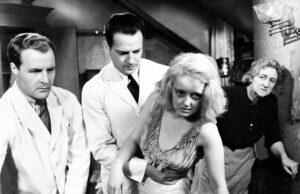
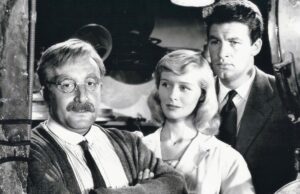
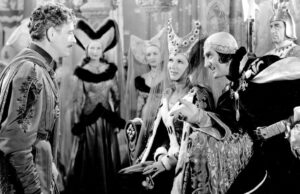






Leave a Reply